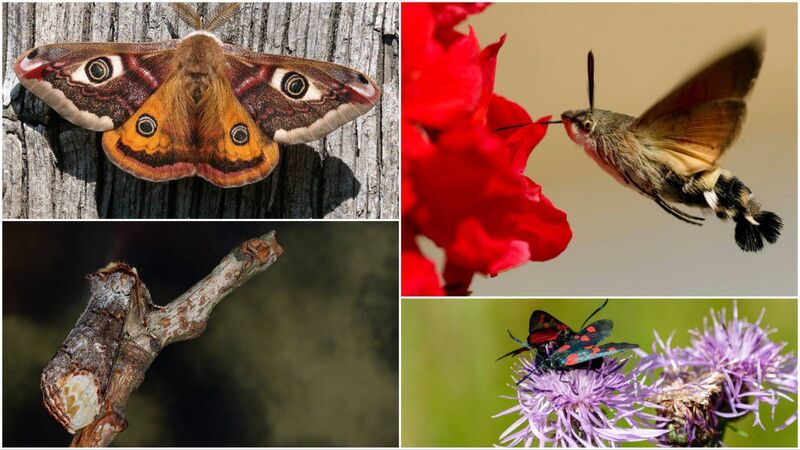Anja Murray: Fascinating and essential — 1,500 reasons to save moths and their habitats

Clockwise from top left: emperor moth, hummingbird hawk moth, six-spotted burnet moth, buff-tip moth
Clambering through a woodland or strolling along a hedge-lined laneway, each habitat we explore has its own array of specialist plants and animals to see. Sandy shores have succulent plants and scuttling crabs; peat bogs have sphagnum mosses and dragonflies; and deciduous woodlands are layered up with tall trees, hanging trails of honeysuckle and a constant chorus of birdsong. And in each of these distinctive ecosystems, there is always an array of specialist moths.
Among the 1,500 different species of moth occurring in Ireland, there is a massive variety. Most are night flying, and many have evolved to blend in with their surrounds. Some look just like a piece of a leaf, others you can hardly see on a branch even if you are looking right at them. The majority of moth species are tiny micro-moths with a wingspan of less than 20mm.








